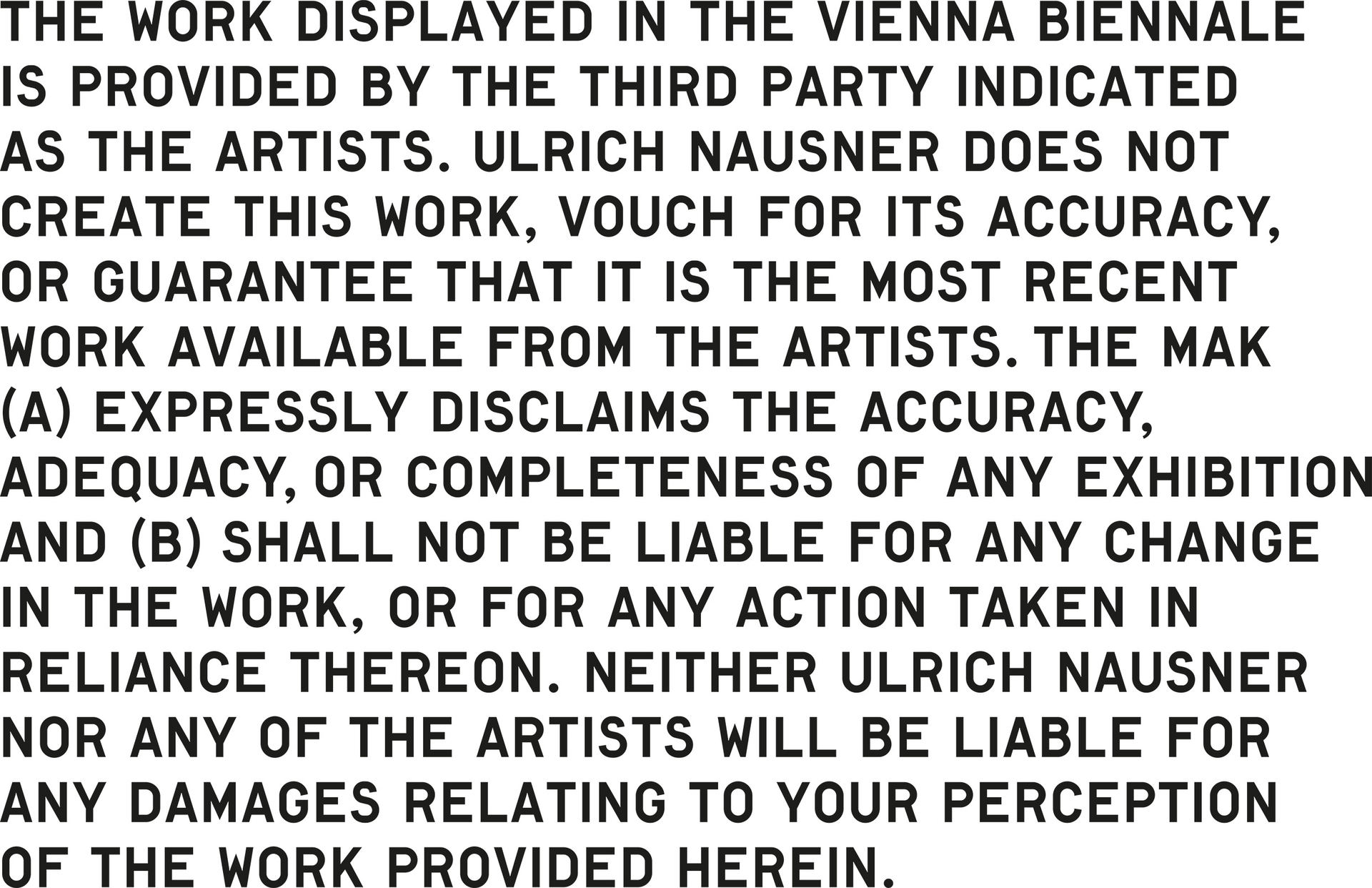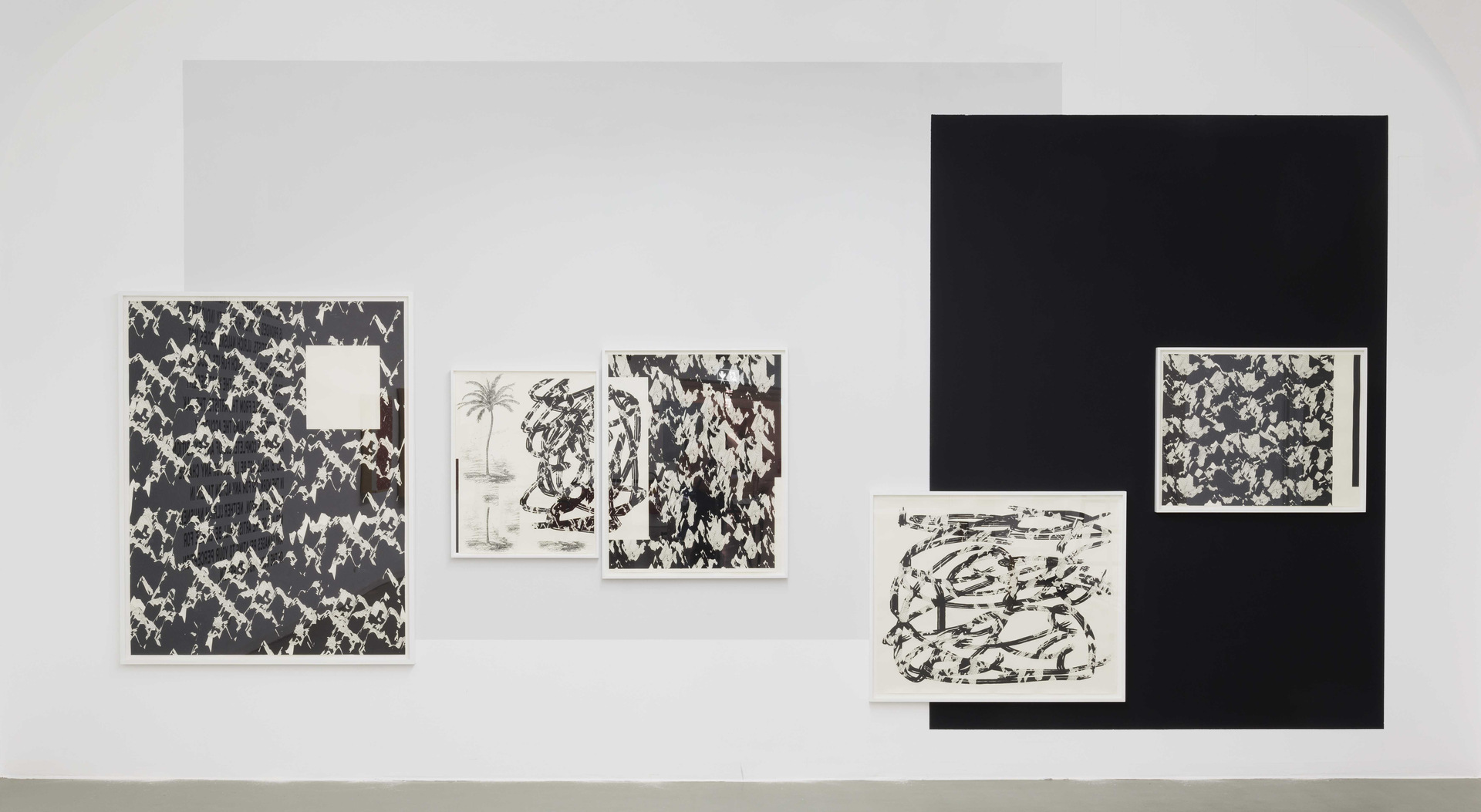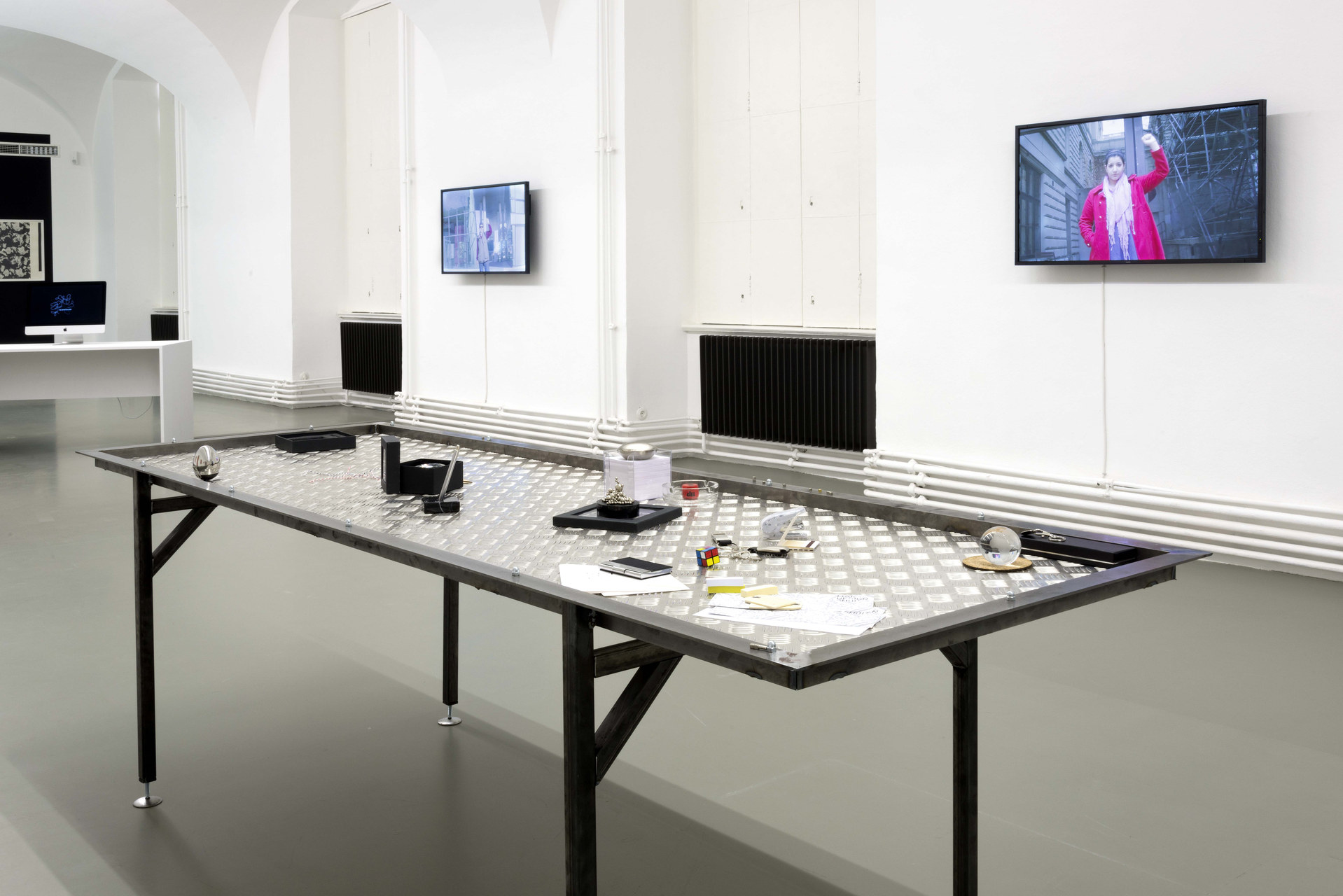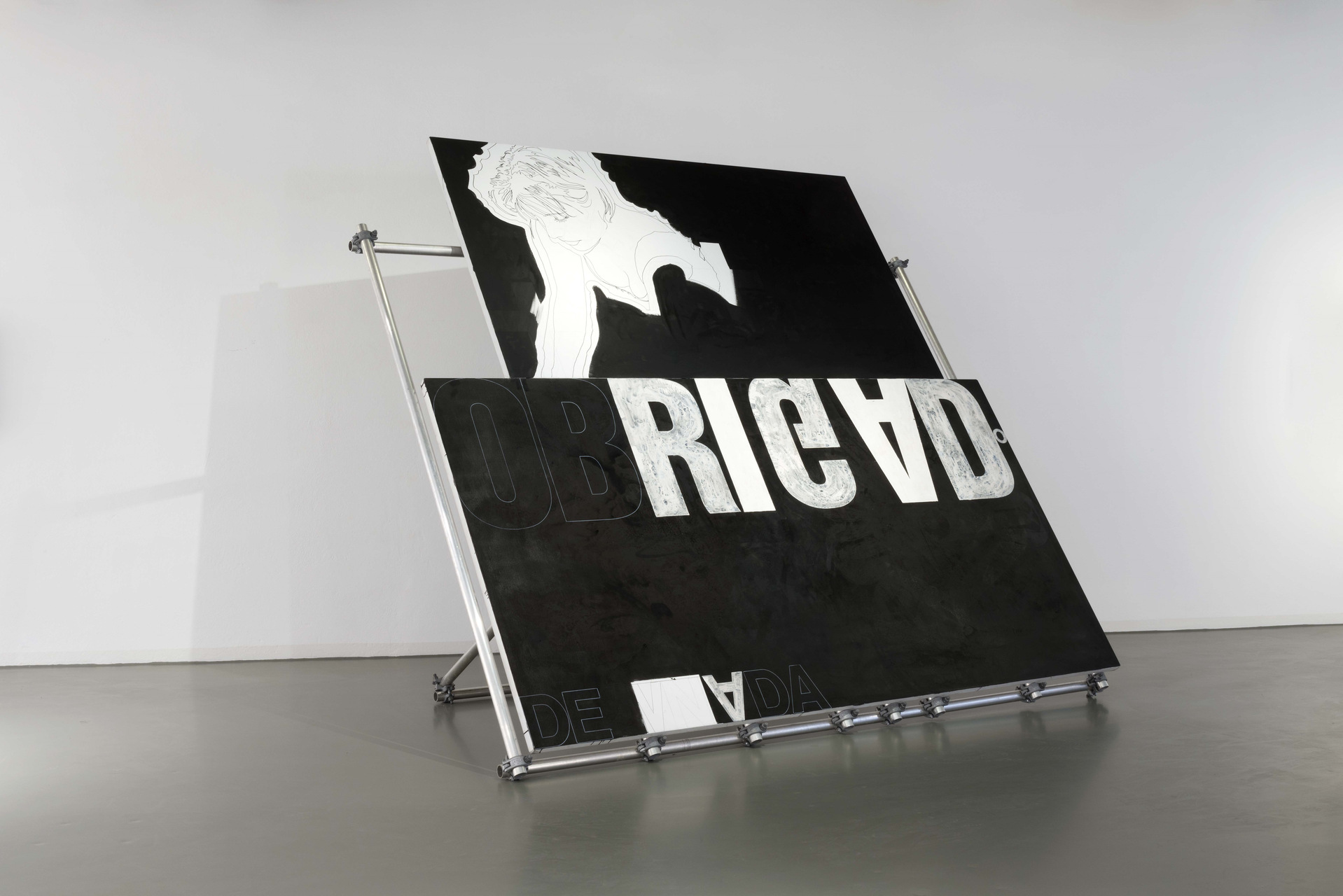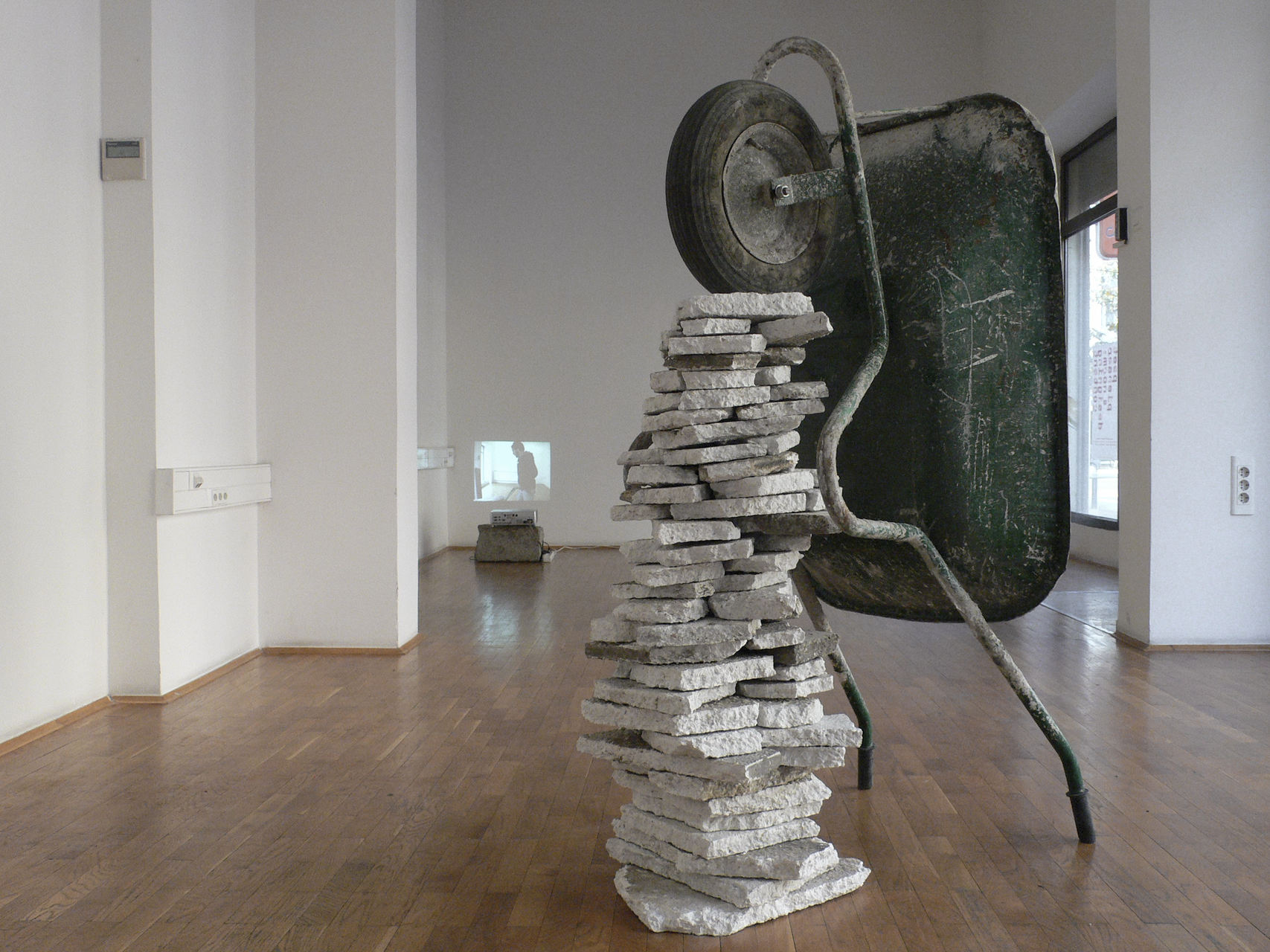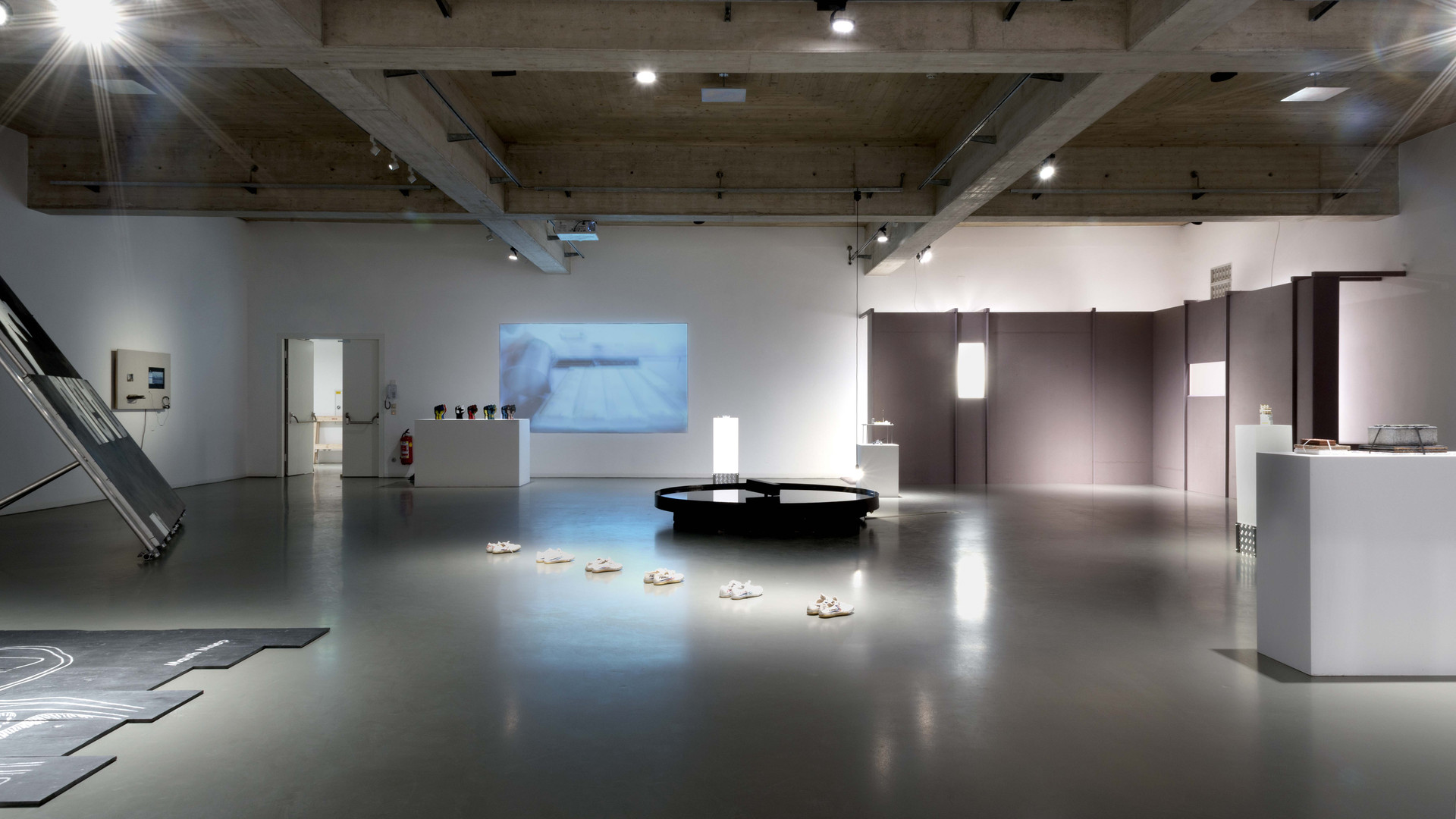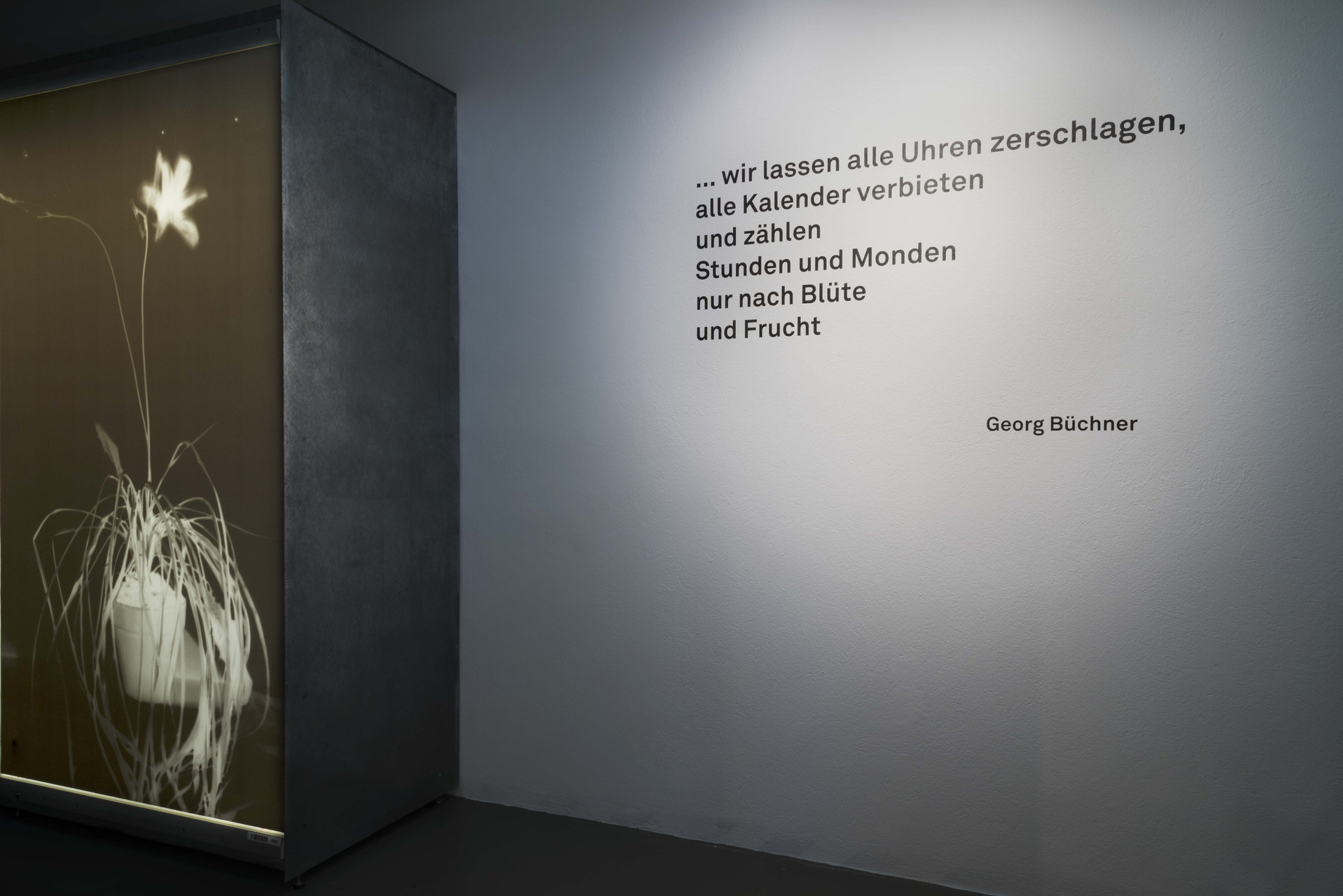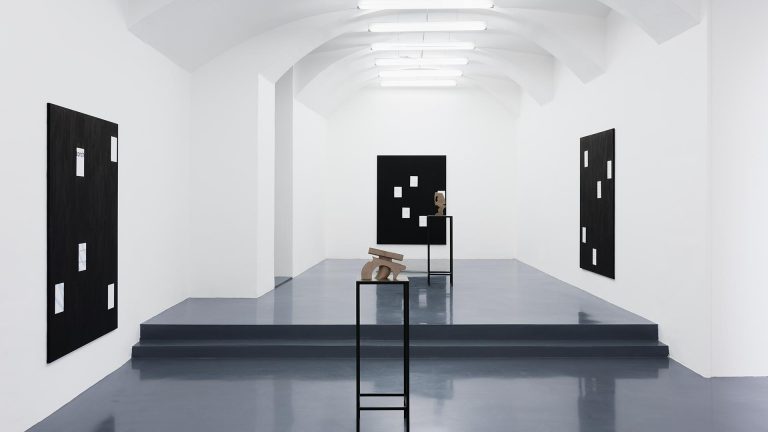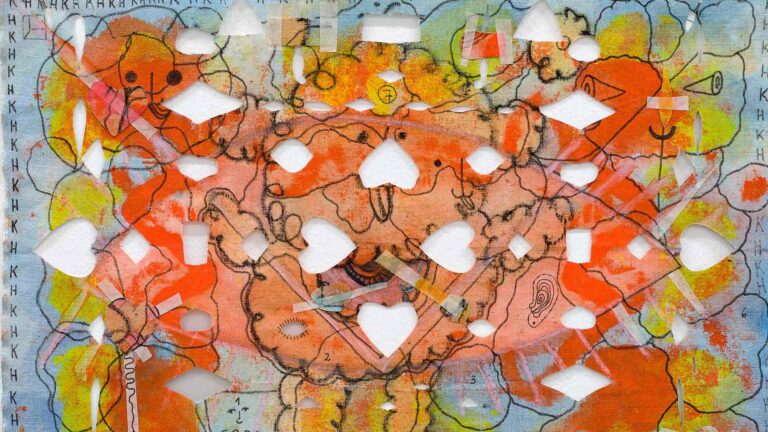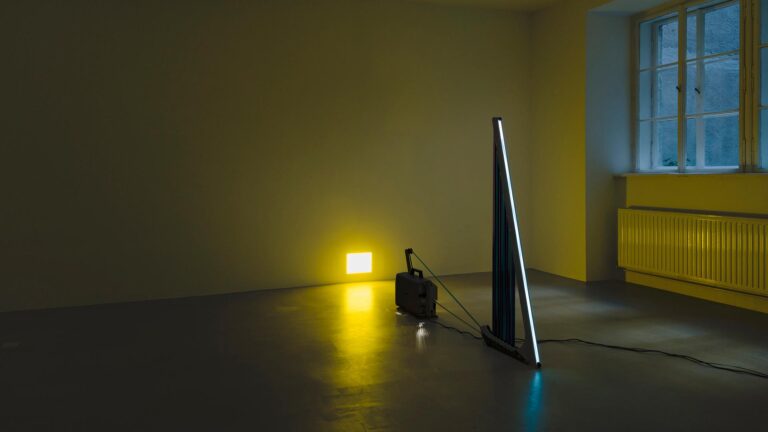Artists: Ben Thorp Brown, Verena Dengler, Carola Dertnig, Harm van den Dorpel, Andreas Duscha, Andreas Fogarasi, Franz Graf, Kathi Hofer, Peter Jellitsch, Lazar Lyutakov , Mahony, Christian Mayer, Ulrich Nausner, Danica Phelps, Lili Reynaud-Dewar, Valentin Ruhry, Seth Weiner, Anna Witt
Exhibition title: 24/7: the human condition
Curated by: Marlies Wirth
Venue: MAK, Vienna, Austria
Date: June 11 – October 4, 2015
Photography: MAK/Aslan Kudrnofsky, images copyright and courtesy of the artists and MAK, Vienna, Austria
“I GOT UP” the Japanese artist On Kawara stamped along with the respective time of day on a series of postcards that he sent to friends and artist colleagues every day between 1968 and 1979. His days began with this apparently natural, insignificant act, which characterizes the “condition humana” of a person’s life both intimately and politically: 24 hours a day, 7 times a week.
In her magnum opus, The Human Condition (1958, published in German as Vita active oder Vom tätigen Leben in 1960), the philosopher Hannah Arendt describes the basic conditions of human life with three terms that can be used to describe the individual’s autonomous, active participation in society: “labor, work, and action.” While Arendt’s understanding of labor and work subsumes those (individual) activities that are directly necessary for the production of (material) goods, she describes (interactive) action—language and communication—as human beings’ greatest asset.
Today the human condition is marked by turmoil and restlessness. In the increasingly fast rhythm of our “non-stop society,” time is the determining factor, and time is money. The performance- driven society of the 21st century has long transcended the boundary between labor and leisure, the private and the public, and is still attempting to counteract its exhaustion by means of self- optimization. Disregarding the measures of chronobiology and the “inner clock” of human beings and nature, all activities are synchronized through the simultaneity of analog and digital experience.Between distraction and inspiration, the progressive digitalization of all areas of life is leading to the complete dissolution of the boundaries of our perception of time and expectations of performance. Life and work bring the same symptoms to light: overload, lack of sleep, the pressure of responsibility, and the loss of autonomy and freedom.
Work as a philosophical category encompasses all processes of human beings’ conscious creative engagement with nature and society. Craftsmanship no longer only implies manual skills with traditional materials, but also skills (competencies and proficiencies) that include the use of digital technologies and one’s own identity as capital. Humans are engaged in a constant creative exchange with their environment and by absorbing and reorganizing images and information around the clock are part of the “social factory” in which private and public performance have inextricably merged.
Between longing and the pressure to perform, identification and opposition, recognition and exhaustion, the helplessness of the working subject is becoming apparent: precariousness and the stigma of not being able to adequately ensure our own existence are a constant threat because hey are marked by the struggle to maintain the balance of body and mind as well as dreams and goals. The value and assessment of (invisible) human work are at the center of mechanisms of social evaluation; our activities are measured by their speed, accuracy, and efficiency—in short, people are measured against machines. But the complex processes that constitute human decisions and thus our ability to act cannot be taken over by artificial intelligence. Our true desire is self-determination, to actively and individually shape our own life, our environment, and society. The initiative that we ourselves take in order to deal with a growing, all-encompassing, and constantly changing world stands for the uniqueness of human beings and the creativity of our time.
In the fragile balance between competition and cooperation, our actions influence those of others and consciously and unconsciously determine the conditions under which identity, knowledge, and sustainable values are created for society. As an alternative model to financial capitalism and the constant availability of digital resources, (political and artistic) action—informed by the immateriality of communication and empathy—cannot be definitively evaluated in terms of performance and therefore attain the status of permanence. It is with this status of permanence that human beings are inscribing themselves 24/7 into the cultural narrative of the Anthropocene, the age of human activity.
The group exhibition 24/7: the human condition includes existing works and newly produced works by artists of a younger generation in the context of the art scene in Vienna and beyond and features a wide range of artistic engagement with various aspects of a cultural understanding of labor, work, and action.
Danica Phelps, Cost of Love (panel #6), 2011
Courtesy of the artist and Galerie Hubert Winter
Ulrich Nausner, Limitation (MAK), 2015
Peter Jellitsch, Data Drawings (29–33), 2015
Harm van den Dorpel, Event Listeners, 2015
Kathi Hofer, Offering, 2015 (detail)
Anna Witt, Gleitzeit, 2010
Courtesy of the artist and Galerie Tanja Wagner, Berlin
Carola Dertnig, Stroller 1–3, 2006–2008
Carola Dertnig, Stroller 1–3, 2006–2008 (still from video)
Christian Mayer, laengwedzh, 2015
Christian Mayer, Penning a note to the ages, 2015
Courtesy of the artist and Galerie Mezzanin
Christian Mayer, ULAM, 2013
Courtesy of the artist and Galerie Nagel Draxler
Franz Graf, OBRIGADoDENADA, 2011/2015
Courtesy of the artist and Galerie Krinzinger
Mahony, We are the world, 2010
Courtesy of Galerie Emanuel Layr
Valentin Ruhry, Working the City, 2007–2012
Courtesy of Christine König Galerie
Valentin Ruhry, Working the City, Skopje 2007, 2012
Courtesy of Christine König Galerie
Seth Weiner, so only the shadows are left described, 2015
Kathi Hofer, Offering, 2015 (detail)
Lazar Lyutakov, Feiyue, 2013 (detail)
Ben Thorp Brown, Untitled (Fists), 2015
Courtesy of the artist and Bischoff Projects
Andreas Fogarasi, LED China, 2012 (detail)
Andreas Fogarasi, Skizzen [Sketches], 2015
Verena Dengler, Sponsors, 2001–2014
Lili Reynaud-Dewar, What a pity you’re an architect, Monsieur. You’d make a sensational partner (After Josephine Baker), 2011
Courtesy of Galerie Emanuel Layr
Andreas Duscha, … we’ll smash all clocks, forbid all calendars, and only count hours and moons by the flower clock, only by flowering and fruit, 2015
Andreas Duscha, … we’ll smash all clocks, forbid all calendars, and only count hours and moons by the flower clock, only by flowering and fruit, 2015






